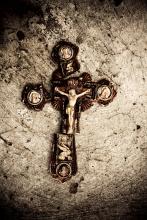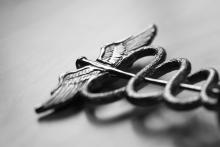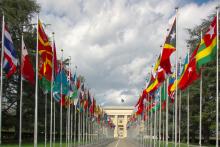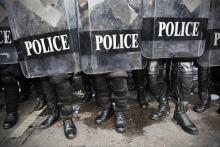Commentary

THE VATICAN REPORT on the three-year investigation of U.S. Catholic sisters landed softly in the national media in December, as major stories combined with Christmas to fill the news cycle. Good timing, if the intent was to bury it. But the story isn’t over.
Some years ago, two Vatican offices, under the leadership of Pope Francis’ predecessor, Pope Benedict XVI, launched separate investigations of U.S. women religious, first of the individual orders and later of their leaders’ membership organization.
Why? The general consensus seems to be that high-ranking conservative U.S. bishops were angry at sisters who had generally served as obedient poorly paid minions to do their bidding, but who now were infected with a certain “feminist” outlook on life.
A September 2008 conference on religious life, held at Massachusetts’ Stonehill College, gathered conservative voices critical of how U.S. sisters had “modernized” following the Second Vatican Council. Within a few months, a Vatican office (the “Congregation for Institutes of Consecrated Life and Societies of Apostolic Life”) announced it would survey every group of “active” (vs. contemplative) U.S. Catholic sisters.
AS ICE CREAM entrepreneurs, Jerry and I have been on a journey that has led us squarely to the conclusion that, while there are many ways that a business can use its power to improve people’s quality of life, the most effective lever for economic and social justice is the government.
Business can use its voice to influence government for good. But too often big corporations use the system of unlimited political “donations”—a system that John McCain calls “legalized bribery”—to skew the government in favor of their own narrow self-interest. That’s why I’m devoting my time and treasure to hacking at a root cause of injustice: big money in politics and crony capitalism.
A nationwide poll of small-business owners commissioned by Small Business Majority found more than three-fourths (77 percent) of small employers say big businesses have a significant impact on government decisions and the political process, whereas a mere 24 percent say small businesses have a significant impact on the process.

[A] POPULAR consensus is forming around the fact that new world realities demand fresh policies, beyond militarism. Public opinion is increasingly sophisticated about military and foreign policy issues. This is in large part due to the efforts of the peace movement.
A significant share of the peace movement's task is to promote political literacy in our own country. Every town meeting organized, every opportunity arranged for people to make their own judgments and come to their own decisions about U.S. foreign and military policy is an investment in future social and political change. As people are confronted with these moments of decision, they are given the information, the tools, the sense of their own power to determine the shape of national security policies.

IN OCTOBER 2013, an ad hoc group of humanitarians in Tucson, Ariz., chained themselves under buses scheduled to bring undocumented immigrants to trial at the federal district courthouse. The protests were aimed at Operation Streamline, which requires federal criminal charges to be brought against every person accused of an illegal border crossing. The action halted, for one day, Operation Streamline’s en masse prosecution of groups ranging from 50 to 100 people.
Under Operation Streamline, implemented under the Bush administration, deportation cases shifted from civil immigration authorities to federal criminal courts, a move that forced undocumented immigrants into the federal criminal justice system and into U.S. prisons. Operation Streamline is undergirded by a 2005 Customs and Border Patrol program called the Consequence Delivery System (CDS), which “guides management and agents through a process designed to uniquely evaluate each subject and identify the ideal consequence to break the smuggling cycle.” Using CDS, a first border-crossing offense is treated as a misdemeanor, punishable by up to six months in prison. Those who are caught a second time face deportation and possible felony convictions punishable by up to 20 years in prison.
Prior to CDS, border crossers without proper documentation were rarely prosecuted as criminals; instead, they were “administratively deported” through the civil immigration system. Under fast-track programs such as Operation Streamline, a federal criminal case—with prison and deportation consequences—can be completed in two days or less.

SINCE WAR BROKE out in the Central African Republic in March 2013, the international community has referred to it as a “religious conflict.” When the media cover the violence at all, they usually frame it as a story of Muslims against Christians. However, to call this conflict a war of religion is simplistic at best and a smokescreen for the real causes at worst.
That is the message that Central African Republic (CAR) faith leaders—Catholic, evangelical, and Muslim—have worked tirelessly to spread, at great personal cost. Imam Omar Kobine Layama, president of the Central African Islamic Community, Catholic Archbishop Dieudonné Nzapalainga of Bangui, and Rev. Nicolas Guérékoyame-Gbangou, president of the Evangelical Alliance of the Central African Republic, have been at the forefront of their country’s peace and reconciliation movement.
During a November 2014 interview in Washington, D.C., Archbishop Nzapalainga adamantly refuted the “religious war” narrative.
“Our role is to continually remind our religious believers ... that those people who want to kill people or rape people ... are in contradiction with their faith,” he told Sojourners. “We, for example, have never been telling our believers that they should go out and kill Muslims, and the imam has never been telling his followers that they should go out and kill Christians.”

THE AFFORDABLE CARE ACT, which has now been the law of the land for five years, is beginning to reshape the national landscape in significant ways.
According to a New York Times analysis of the ACA’s first enrollment period, about 10 million additional people gained insurance in 2014. Many of them fall into demographic groups that have historically struggled to access coverage, such as low-income Americans, people of color, and women. Ultimately, President Obama’s health law is slowly making the country more equal.
There are a few ways the ACA is accomplishing that goal. It has built-in consumer protections to ensure that insurance companies treat people more fairly. It’s created state-level marketplaces to give people new options for purchasing private plans. And it’s expanded the pool of people who are eligible for public coverage through the Medicaid program.
Health policy experts agree that adding more low-income people to the Medicaid rolls represents one of the biggest successes of the ACA so far. According to the Urban Institute, a nonprofit research group, the states that agreed to expand their Medicaid programs—27 so far, plus the District of Columbia—have seen about a 40 percent drop in their uninsured rates.

IF A POLL WERE to be taken in North American churches concerning the causes of poverty, the results might be quite revealing. The major cause of poverty is widely assumed to be “underdevelopment.” Other prominent factors are believed to be laziness (we’ve all read about those exemplary ants in Proverbs 6), vices such as drunkenness, and, however subtly and discreetly expressed, the supposed racial and national inferiority of certain peoples. It’s a very comforting worldview, and one that our most popular politicians delight to propagate.
But if you look up “underdevelopment” in a concordance ... you find precisely nothing. The Bible contains a few scattered references attributing certain instances of poverty to laziness, drunkenness, and other assorted causes, but hardly enough to substantiate any of them as the basic cause.

IN APRIL, THOUSANDS of people from across the United States and the world, joined by activists and A-bomb survivors from Japan, will flock to New York to demand that the nuclear powers fulfill their nuclear Non-Proliferation Treaty (NPT) obligations to negotiate a legally binding agreement to completely eliminate their nuclear arsenals.
The NPT Review Conference, held at the U.N. every five years, presents an important opportunity for the 189 signatory nations and for civil society to ensure that this treaty is implemented. The treaty rests on three pillars: 1) non-nuclear states forswear becoming nuclear powers; 2) all signatory nations have the right to generate nuclear energy for peaceful purposes (a serious flaw); and 3) the P-5 nations (U.S., Russia, Britain, France, and China) are obligated to engage in good-faith negotiations to completely eliminate their nuclear arsenals.
Forty-five years after the treaty went into effect, the P-5 have yet to fulfill their part of the bargain, leading to a loss of faith by a growing number of nations and the danger that some will opt out of the treaty to equalize the imbalance of nuclear terror. With the U.S. and Russia having engaged in nuclear war exercises during the Ukraine crisis, simulated U.S. nuclear attacks against North Korea, the U.S.-Chinese arms race, and India and Pakistan again at loggerheads, April’s review conference provides a critical opportunity to press for nuclear weapons abolition and to build the nuclear disarmament movement.

THE CONSIDERABLE gap between Walmart’s declared corporate values and the way it actually conducts business widens even more during the holiday season.
This season, shoppers frequenting the world’s largest retailer are encouraged to select the name of a child and to purchase and donate her wished-for gift from one of the “giving trees” located in stores. Throughout the year, the company works hard to give the impression of corporate generosity, giving, for example, to food banks.
However, many of Walmart’s own employees (or, as they are referred to in Walmart-speak, “associates”) are forced to rely on these same types of programs to get by—such as Christmas gifts for their children (purchased by strangers) and groceries from food banks.
Walmart, the United States’ largest employer, employs 1.4 million Americans; that’s five times as many as IBM. Walmart manufactures the very problems that it proudly claims to alleviate, which is worse than doing nothing at all. The deception would be laughable were it not tragic. Walmart seeks praise for funding food banks and providing toys for children in need, when they are a big part of the reason people struggle to buy food and gifts in the first place.

THE U.S. AND other nations are increasingly aware that the so-called Islamic State is a serious, long-term threat to Middle East stability. And it has become clear that there are few good options for addressing the situation without the willingness and ability of the Iraqi government to promote inclusion and weed out corruption.
In the midst of all this, the plight of Iraqi Christians has taken center stage. Since the U.S.-led invasion of Iraq in 2003, more than two-thirds of the Iraqi Christian community has left the country, with many fleeing as a result of violence and religious persecution.
This exodus has only increased as the reach of the Islamic State, or ISIS, has expanded and its reputation for brutality become widely known. The militant group has publicly beheaded hostages for propaganda purposes, committed mass killings, and given Christians the ultimatum: Convert to Islam, pay a fine, or face death if they remain faithful to their beliefs.
Followers of Christ have existed in the area now called Iraq since the earliest days of Christianity. Now there is a serious debate as to whether the faith has a viable future in this ancient of lands.

AS A FORMER reserve police officer who has taught ethics at two police academies, I followed the news very closely after 18-year-old Michael Brown was shot to death by police officer Darren Wilson in nearby Ferguson, Mo. When I saw the military equipment of the St. Louis County Police—especially the sharpshooter on top of an armored vehicle aiming his rifle at the protesters—I said to my wife, “This may turn out to be very, very bad.”
Sen. Claire McCaskill argued in the midst of the protests that St. Louis County should “demilitarize the police response” in Ferguson, telling reporters, “The police response has been part of the problem.”
The militarization of police has been trending over the past few decades. When the thin blue line resembles an occupying force, it exacerbates racial tensions in neighborhoods and communities, making things worse for everyone, including the police.
Some communities are starting to push back. For instance, the city council of Davis, Calif., recently directed its police department to get rid of a mine-resistant, ambush-protected vehicle (worth $700,000) that it had received free from the U.S. military’s surplus program.
CONSIDER A FATHER from rural Liberia who shows symptoms of Ebola. There are no health clinics in or near his village, so he and his family make the 10-hour trip to Liberia’s capital, Monrovia, using public transportation, potentially infecting others at every stage of their journey.
They arrive at the city’s public hospital, which is overflowing with patients because the facility is understaffed and underresourced. Staff members don’t have sufficient training or the tools to treat Ebola’s symptoms, the space to isolate infected patients, or the appropriate equipment to protect themselves from danger. They can’t cope with the sheer number of patients—those with the virus or with other illnesses—and the father likely dies.
What if, instead, the father is seen by a community health worker in his village? She notes his fever, vomiting, and diarrhea and knows he needs fluids immediately. The nurse who supervises her concurs, and they begin treatment. In the meantime, the nurse sends word for an ambulance from the nearby clinic to retrieve him, and she tells the family to limit their contact with others and to watch for similar symptoms in themselves for three weeks.
The local clinic is fully staffed and resourced. Doctors and nurses in full protective gear meet the ambulance, take the father to a hospital bed that is placed at some distance from others, and continue administering fluids. Because his community health worker spotted his symptoms early, and because high-quality care is close by, the father likely lives.

WHEN JOHANNES BRAHMS first played his German Requiem in Vienna in 1867, the audience was shocked. In fact, scholars report that some “hissed and booed and behaved quite boorishly.”
This October, when the St. Louis Symphony performed the same piece along with German composer Detlev Glanert’s arrangement of Brahms’ Four Preludes and Serious Songs, it elicited a similar response.
Not to the work itself, but to what occurred during intermission.
As conductor Markus Stenz took the stage, two audience members began to sing. In strong, clear voices, they performed Florence Patton Reece’s famous justice hymn: “Which side are you on, friend? Which side are you on?” Nearly a dozen more scattered throughout Powell Hall joined in. While the audience watched in stunned silence, a banner unfurled from the balcony with a silhouette of a man’s face. It said: Requiem for Mike Brown 1996-2014.
As in Vienna, there were some boos from the audience and a few expletives—more disruption following the Aug. 9 shooting death of Michael Brown, an unarmed African-American teenager, by white police officer Darren Wilson. While the Vienna audience complained that Brahms’ music was too religious for a secular setting, one St. Louis symphony-goer asked, “Is Powell Hall a proper venue for a protest?” And a Catholic priest challenged: “Instead of chanting ‘Which side are you on?’ further dividing the community, try singing ‘How can we heal?’”

DESPITE APPEARANCES, economics is in essence a very personal and fundamentally moral discipline. It is nothing short of the web of our material relationships with one another and with the natural environment. Economic relationships have personalities and personal histories. Inescapably, these relationships physically manifest our social and spiritual values.
Our language expresses this duality. “Values” are both moral principles and economic measures. “Equity” is defined both as a financial interest in property and as fairness or justice. The root of “property” is also the root of “propriety.” But perception and practice often reflect a division between them.

OUTSIDE OF BUSINESS circles, accountability is rarely a popular conversation topic. Its implications of deference to authority and limitations on personal freedom are at odds with Western cultural trends. But the controversies that have dogged evangelical pastor Mark Driscoll demonstrate the need for Christians and churches to think more seriously about how authority is understood, exercised, and appropriately checked.
Driscoll, a best-selling author and pastor of Mars Hill Church in Washington state, is known for preaching a “muscular” brand of Christianity and a personal arrogance that fits the part. His views and provocative statements on gender roles, homosexuality, and a variety of other topics have repeatedly sparked debate within evangelicalism, but recent revelations that he pseudonymously posted offensive comments on an online church message board have justifiably brought condemnation from many.
Yet Driscoll’s theology is not the only thing landing him in hot water. A group of more than 20 former Mars Hill pastors have filed a formal grievance with the church based on Driscoll’s leadership style and actions that have been labeled intimidating, controlling, and abusive. Revelations that church funds were spent to buy copies of his book in the hopes of making it a New York Times bestseller and allegations of plagiarism resulted in a formal apology and his publisher pulling books from store shelves. This fall, Driscoll took a multiple-week leave of absence and sought counseling while the church reviewed the complaints against him.

WHEN IT COMES to speaking out on sexual violence, the first barrier for pastors is awareness of the problem, according to a LifeWay poll, “Broken Silence.” Commissioned by Sojourners and IMA World Health, the poll—released in June—surveyed Protestant pastors across the United States on their views on sexual and domestic violence. That church leaders don’t often discuss sexual violence is not surprising; for perhaps the first time in the United States, the poll puts numbers to just how few actually do—and illuminates some reasons for the silence.
The lack of awareness of sexual violence is a multipronged problem. According to the poll, 74 percent of surveyed pastors underestimate the level of sexual violence experienced by members of their congregations. In part, this gap reflects a failure to understand the tragic ubiquity of sexual violence—1-in-3 women in the United States, and 1-in-4 men, will experience intimate partner violence in their lifetime. In a country in which 80 percent affiliate with religion, statistics strongly indicate that this issue is as pervasive within congregations as without.
Another problem, however, is around the willingness to believe it is happening. Of the pastors who talk about sexual violence, 72 percent do so because they believe it happens in their local community—but only 25 percent acknowledged that their own congregants may have experienced it.
“It couldn’t happen among Christians” is, sadly, a very common refrain among faith institutions. Reported instances of sexual abuse this year at Christian colleges, from Patrick Henry to Pensacola, indicate the deep costs of this refusal to ask whether sexual violence could happen “within the flock.”

ON AUG. 9, Michael Brown, an unarmed black teenager, was shot to death by Ferguson, Mo., police officer Darren Wilson. A collective groan was let out across social networks—people began the lament “Not again.”
Just four days prior, John Crawford III, a 21-year-old black man, had been gunned down by police in a Walmart in suburban Dayton, Ohio, without warning, while shopping for a BB gun. A few weeks earlier, Eric Garner, an African-American man, was choked to death by a New York City police officer.
For young black men, each incident is a reminder of how easily our lives can be taken away by police aggression. For the people in Ferguson, however, over-policing is all too familiar. In a city where 67 percent of the residents are black, there are only three black police officers on a force of 53.
A 2013 report from the Missouri attorney general’s office revealed just how bad relations are between officers and black citizens. Out of the 5,384 traffic stops made last year by the Ferguson Police Department, 86 percent of them targeted black drivers. Black drivers were searched and arrested at nearly twice the rate of white drivers, although contraband was found at a rate 13 percent less than that of white drivers.
EL SALVADOR'S war has already claimed 40,000 lives. But our government has taken the stance that Salvadoran “illegals” are economic, not political, refugees, and therefore have no right to be here. Despite stories and statistics to the contrary, our government doesn’t believe they have a “well-founded fear of persecution” that would entitle them to political asylum here. Meanwhile refugees keep coming with the same story of their government’s organized killing and repression. Where are our ears to hear and to respond? ...

ON JUNE 2, Environmental Protection Agency administrator Gina McCarthy announced the next phase in the Obama administration’s war on carbon pollution. The Clean Power Plan aims to reduce carbon-dioxide emissions from existing fossil-fuel power plants (the largest source of carbon pollution in the U.S.) 30 percent by 2030. That same day the stock market closed with record highs, and more than 173 companies and investors sent a letter to President Obama in support. Business understands that these regulations are good for long-term economic health.
State governments have welcomed the new plan because while the carbon limits are fixed, the path to achieving them is flexible. It allows both “rate-based” and “mass-based” methods of reduction, something unusual for the EPA, thus allowing some states to target specific industries and others to aim for overall carbon reductions. Catholic social teaching includes the principle of “subsidiarity”—let the most competent authority closest to the problem determine what works best in achieving a common-good goal. The Clean Power Plan that McCarthy, a Catholic, has rolled out does that. Yet it’s not enough and it’s not fast enough to beat our ecological endgame.
President Obama has pledged to reduce U.S. greenhouse gas emissions 17 percent below 2005 levels by 2020. To this end, he has 1) steadily increased car and truck fuel-economy standards; 2) required permits and set strict emission standards on all new fossil-fuel power plants; and 3) taken smaller, interlocking steps, such as establishing wind and solar renewable energy production on public lands, working with China to phase out hydrofluorocarbons, and significantly restricting funding from U.S. foreign aid agencies for new coal plants in other countries. This fall he may launch a low-intensity war on methane pollution from fracking and landfills. It’s not enough. There are too many loopholes.
SIXTY YEARS AGO, Brown vs. Board of Education held that it was unconstitutional to have separate public schools for black and white students. Fifty years ago, a landmark piece of U.S. civil rights legislation was enacted that outlawed discrimination based on race, color, religion, sex, or national origin. By design it was to end, among other important things, educational racial inequities by eliminating separate educational experiences based on race.
Yet today, no matter how we view the data, children of color, especially African-American boys, show unequal levels of achievement—well below their white classmates. Data from the National Association for Educational Progress (NAEP) shows 38 years of limited-to-no change in rates of achievement for African-American and Latino children. Schools across the country are still distinctly segregated by race, and the willful interest and resolve to lead on these issues remains sluggish.
Overcoming systemic racial achievement disparities among children in our public schools is an overarching moral imperative of our day.
How is it that we cannot collectively rupture this trajectory—more than half a century later—“with all deliberate speed”? As an educational leader I find myself focused on these questions: Are those invested in educating our children interested enough? Do we actually know how to educate all students equitably? Where is the resolve among us to make lasting change for all children? I believe that, if we are interested, we’ll learn. And that once we know how, we can change this narrative—but only if we are resolved to insist on positive change no matter the cost.